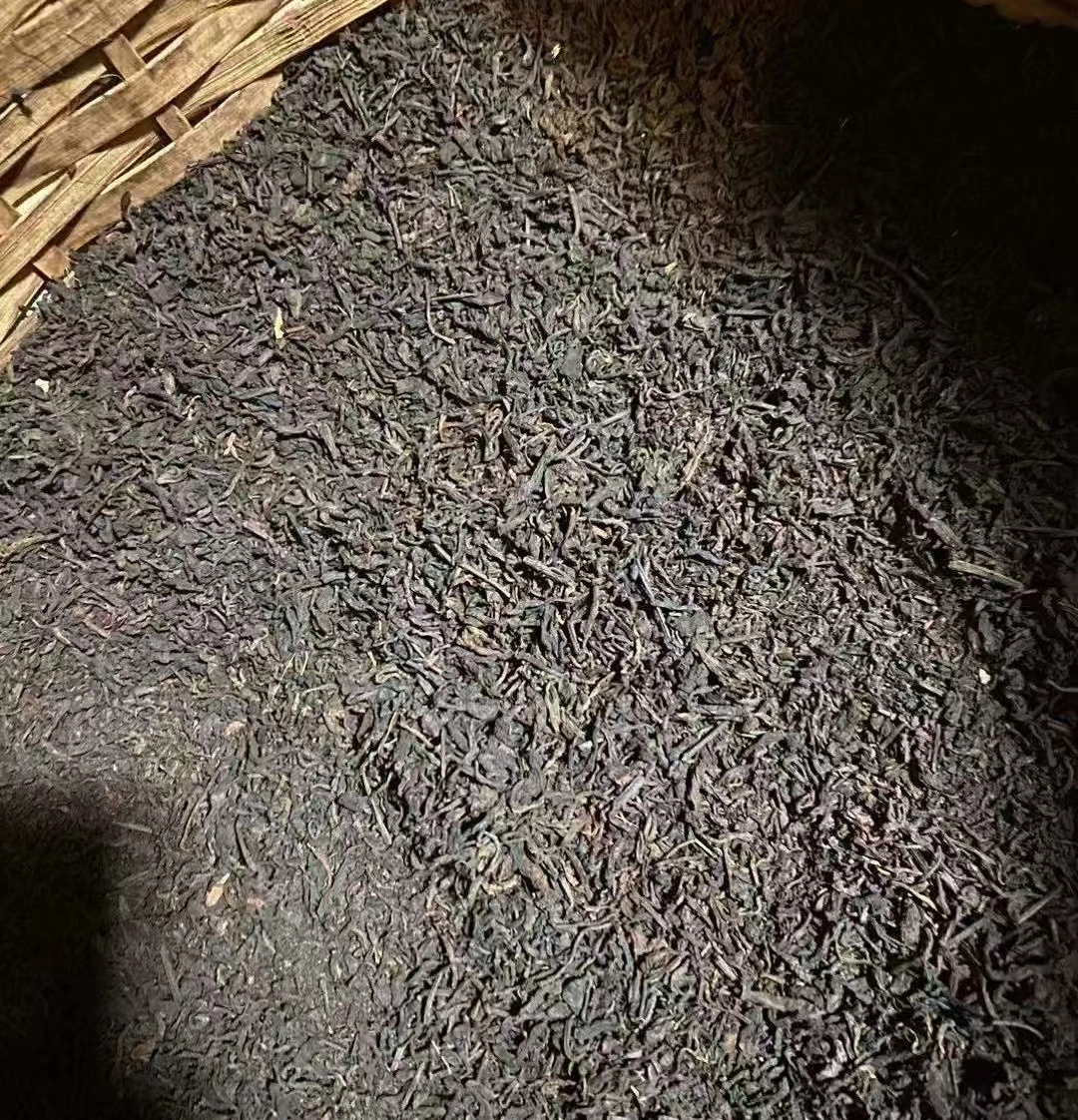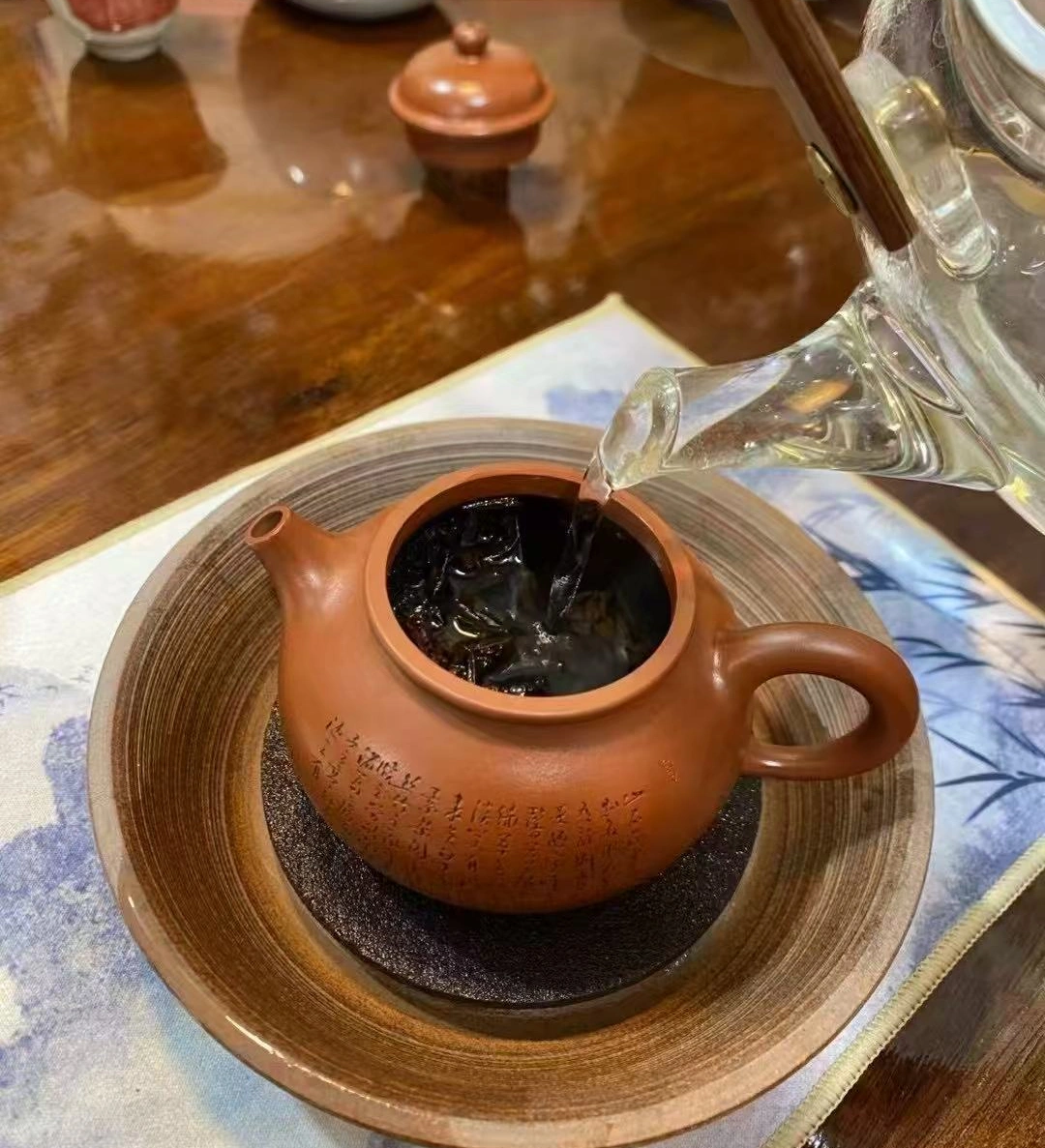Imagine cradling a warm, amber-hued cup in your palms. As you inhale, a medley of earthy musk and faintly sweet notes—like aged mahogany kissed by morning dew—entices your senses. That first sip cascades across your tongue in silky waves, revealing layers of depth that only decades of patient aging can bestow. This is the magic of aged dark tea: a living elixir that pulses with history, terroir, and the transformative power of time.
From the mist-shrouded hills of Guangxi to the sun-drenched valleys of Yunnan, aged dark teas whisper tales of ancient tea masters and hidden cellars. Each pressed brick or rounded cake carries a legacy of microbial alchemy, converting fresh leaves into sumptuous, mellow brews. In this guide, we journey through the origins, varieties (including the famed liubao tea), health benefits, brewing rituals, flavor profiles, storage secrets, and top sources to procure authentic aged dark tea.
1. What Is Aged Dark Tea?
Aged dark tea (sometimes called “post-fermented tea”) begins its life like any black tea: withering, rolling, oxidation. But the real magic starts when tea artisans introduce a controlled microbial fermentation process—often through “pile-fermentation”—and then tuck the tea away for months, years, or even decades. Over time, beneficial microbes transform polyphenols into smooth theabrownins, softening bitterness and forging that signature earthy-sweet depth. Unlike fresh teas, aged dark tea rewards patience: the longer it matures, the richer, mellower, and more complex its character becomes.

2. Origins and Varieties of Aged Dark Tea
Across China’s tea heartlands, several storied varieties of aged dark tea have taken root. Each embodies a unique terroir and aging tradition:
2.1. Liubao Tea (六堡茶)
Hailing from Guangxi’s humid Lipu region, liubao tea is renowned for its thick, velvety liquor and honey-like sweetness. Traditional liubao cakes undergo multiple fermentations and can age gracefully for decades, evolving from bright amber to dark garnet.
2.2. Pu’erh Tea (普洱茶)
From Yunnan’s ancient tea forests comes pu’erh, the most celebrated post-fermented tea. Raw (sheng) pu’erh ages naturally, developing floral-fruity notes that deepen into camphor and leather. Ripe (shou) pu’erh uses accelerated fermentation for an earthy-chocolate richness within months, which then further refines over years.
2.3. Fuzhuan (Brick) Tea (茯砖茶)
Central Hunan’s fuzhuan tea is notable for its dark bricks adorned with golden “tiger blossom” sclerotia—beneficial fungi that impart a mushroomy-umami warmth. With age, fuzhuan tea’s flavor mellows into honeyed wood tones.
2.4. Qianliang Tea (千两茶)
Produced in Hubei, qianliang tea (literally “thousand-tael tea”) is pressed into hefty bamboo buckets. The slow aging yields a robust, spicy-sweet infusion, prized by collectors for its longevity and depth.
3. Health Benefits of Aged Dark Tea
Aged dark tea isn’t just a sensory delight—it brims with health-promoting compounds. Decades of fermentation cultivate microbial richness and unique polyphenol transformations, delivering benefits such as:
- Gut Microbiome Support: The live cultures in post-fermented tea may enhance digestive flora.
- Metabolism and Weight Management: Some studies suggest aged dark tea can aid fat breakdown and lipid regulation .
- Cardiovascular Wellness: Theabrownins and transformed catechins can help maintain healthy cholesterol levels and blood pressure (medicine today).
- Antioxidant Protection: While oxidation reduces some catechins, it also produces unique antioxidants that combat free radicals.
- Calming Mental Clarity: L-theanine remains present after fermentation, offering a gentle uplift without jitters.
🔗 For a more in-depth look, check out this detailed overview of the benefits of black tea from Medicine Today.
4. How to Brew Aged Dark Tea Perfectly
Unlocking the full spectrum of aged dark tea requires careful brewing:
- Measure & Rinse: Use 5–8g loose tea for a 120ml gaiwan or small teapot. Rinse leaves with quick 5-second pour of 95°C water to awaken the aroma, then discard rinse.
- Gongfu Style:
- Infusion 1: 10–15 seconds at 100°C
- Subsequent Steeps: Increase by 5–10 seconds each, up to 8–12 infusions.
- Western Style:
- Steep 3–5g tea in 250–300ml of 90–95°C water for 3–5 minutes.

5. Flavor Profiles of Aged Dark Tea
Aged dark teas display a captivating palette of flavors:
5.1. Earthy & Umami Notes
Think damp forest floor, aged oak barrels, or rich mushroom broth—deep and grounding.
5.2. Sweet & Woody Undertones
As tannins mellow, hints of caramel, honeyed wood, and dried fruits emerge, imparting a gentle sweetness.
5.3. Smooth Mouthfeel & Lingering Finish
The transformed theabrownins lend a velvety texture, with a lingering, warm aftertaste that beckons another sip.
6. Storing and Aging Your Dark Tea
To nurture further aging:
- Temperature & Humidity: Aim for 20–25°C with 50–60% humidity.
- Airflow: Ensure gentle circulation—avoid airtight tins.
- Containers: Use breathable clay jars, bamboo baskets, or paper-wrapped stacks.
- Avoid Odors: Keep away from spices or strong fragrances.
Well-stored tea will darken gradually, and its aroma will evolve from raw vegetation to sweet earthiness.
7. Where to Buy Authentic Aged Dark Tea
For genuine, well-aged liubao and other dark teas, consider these trusted sources:
- Orchid Aroma Liu Bao Tea (36-year vintage)
Buy Now - Classic Liu Bao Tea (30-year vintage)
Buy Now - Vintage Red Bean Liu Bao Tea (27-year aged)
Buy Now
Each link leads to artisan-crafted teas sourced directly from Guangxi’s storied tea hills, guaranteeing authenticity and prime aging conditions.
8. FAQs About Aged Dark Tea
8.1. How long can dark tea be aged?
Properly stored, dark teas can age 20, 30, or even 50+ years, continuously developing new aromas.
8.2. Is aged dark tea more caffeinated?
Fermentation slightly reduces caffeine, making mature dark teas generally gentler than fresh black teas.
8.3. How to judge quality aged dark tea?
Look for a rich, garnet-dark liquor; a sweet-earth aroma; and intact leaf integrity, even after aging.
Conclusion: Embrace Aged Dark Tea in Your Daily Ritual
From first light to twilight calm, a cup of aged dark tea offers more than refreshment—it’s a bridge through time. Surrender to its velvety caress, let its earthy-sweet whispers soothe your spirit, and embark on a lifelong adventure through the unfolding layers of history and flavor. Whether you’re drawn to the honeyed warmth of liubao tea or the ancient mystique of pu’erh and fuzhuan, your perfect cup of time-kissed tea awaits.



